Estimated Fees in India
₹ 300 to ₹ 500 per hour
Find BCA Tuition Fees in your locality
I have been teaching students of BSc.(CS), MSc.(CS), BCA, MCA and BTech (IT & CSE) for the last 5 years as an Assistant Professor in college. Apart from that I also give tutions in batches as well as individually.
- Working as R&D Engineer - Extremely proficient with Python - Experience with Distributed Systems and Machine Learning - Love to Tech.
I have Worked as Senior Faculty in CBSE and RBSE(State Level) Board. Currently I am doing Teaching as a Part time of CBSE and IT Students. I am doing Job as Software Developer. I have also given my services in OMEGA Institute,Jaipur as Counselor.
Post your Learning Need
Get customized quotes and responses from Tutors
Choose & Learn from Tutor of your choice
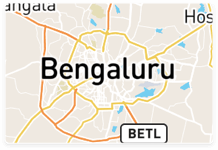
₹ 300 to ₹ 500
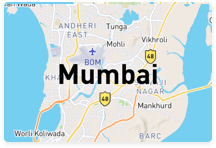
₹ 300 to ₹ 600
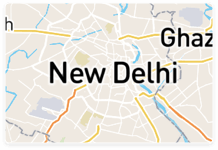
₹ 400 to ₹ 700
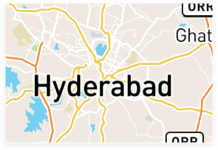
₹ 300 to ₹ 500

₹ 300 to ₹ 400
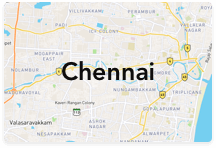
₹ 200 to ₹ 700
Lesson Posted 5 days ago Learn Tuition/BCA Tuition/Business Organization
brick and cick for the web presence

Mallika
Building a 'web presence' for a company or a business is not straightforward as it would seem. In today's crowded and competitive Interme environment, having a simple static website no longer qualifies as 'web presence
To establish your presence over the web, you have to look beyond the stat web site. Companies have tried different themes and models; some have clicke and turned into big successes, while many others have simply fizzled out.
It needs precise planning to make your venture a success.
In this unit, you will see the steps needed to build a successful weh presence and learn strategies that will allow you to transfer your business from just being a store on the block to an e-business on the web.
4.2 SYSTEM ARCHITECTURE
ANSI/IEEE 1471-2000 standards define system architecture as the fundamental organisation of a system, embodied in its components, their its design and evolution. Simply put, it is a description of the design, different relationships to each other and the environment, and the principles governing elements and the interaction between them, based on the business requirement. Web Architecture is the set of principles that all agents in the system follow to create the large-scale effect of a shared information space. Identification, data formats and protocols are the main technical components of Web
It is important to know the working of websites in order to understand the architecture behind the World Wide Web and the web presence. You have already understood the concept of IP address and the working of Internet and ISP. Let's take a practical example in which we will look at how a website page actually opens in the browser on your computer from a remote server over the Internet.
Before connecting to your ISP, if you type www.hotmail.com on your browser, you will see an error page with a message similar to the one given below:
Let's assume you are connected to your ISP using a dial-up network connection with the help of a modem and a telephone line. Now if you type www.hotmail.com on your browser, the hotmail home page opens instantly, From pre-connection to post-connection, what exactly is the change in your computer that helps you to access any website on the Internet?
As soon as you are connected, your machine has been assigned a Dynamic IP address. This address becomes your identity on the Internet. Every machine needs a unique identity in the form of an IP address which enables your computer to be a part of the Internet.
Now, if you observe carefully, when you are typing, www.hotmail.com.on the bottom left corner of your browser you will see a message which may read: "connecting to 201.158.219.56". This means, your computer detected the IP address of the hotmail website and is taking you to visit the hotmail website on that IP address.
So far so good. Now, the next question you have is, "How does my computer know the correct IP address of the hotmail website?"
The answer is simple; your computer gets this information from the Domain Name Server (DNS) that is listed in your TCP/IP properties. If you are not sure about the DNS server that your system is configured to use, from command prompt type IPCONFIG/ALL and you will get the IP address of your DNS server. This is typically an IP address of a server from your ISP. So, your computer actually sends a request to this server placed in your ISP, which is called the DNS server. This DNS maintains a record of all the domains in the world and their corresponding IP addresses. The server instantly returns the correct IP address of the website and your computer is diverted to that particular IP address. Just like the DNS server from your ISP, which caches all the domain data, there are other parent root servers which constantly update the data with the new domains, changed domains and the corresponding IP addresses. Your ISP's DNS server refers to these root servers if it is not able to find the required information of the domain in its list.
A website consists of a group of HTML. pages interlinked with each other. These pages are hosted or placed on an Internet server that is working 24x7x 365 days. When the request from a particular browser reaches this server, the fint page gets loaded. Typically, this page is the page that the hosting server administrator has marked as index.html or default.htm or some other name that the hosting server administrator can decide. So, every timend is loaded on hotmail.com the index page is sent from the hotmail server and is loaded ono your computer.
4.3 WEB PRESENCE STRATEGY
The 1990s was the decade of the .com revolution. Entrepreneurs and venture capitalists flooded to the Internet. Their perception was that sam adding a ".com" to a company name, gave it an added brand value and a stro stock price.
Some businesses made the most of the spectacular .com bubble, innovative thinking and strong visionary planning. Amazon and eBay, example, stand out as undisputed leaders of the e-commerce world.
The basic model of competitive strategy for these businesses wa very different from that of any other business: they retained the fundames principles of low cost, high volume and comprehensive service. The key their success, however, was the way in which they combined these traditis principles with innovative business models to provide products and services a range unapproachable through traditional channels.
Part of the reason that this strategy worked well for these businesses the fact that they were upcoming start-ups.
What happens, however, if you are not a start-up and you already hu business? Will this business strategy still work for you? How can an existing buses grow by making the best use of the all-powerful Internet? The trick for an e business is to find just the right niche that will offer a competitive advantage
Clearly, a web presence strategy will differ based upon the orgathe current positioning of the business. So we should segregate bus organisations in two major sectors as follows: type of business
A start-up organisation which was BORN on the Internet as a part of the e-commerce market space.
Notes
the
ply
by
for
nol
tal
onal
s in
was
10
ve
ness
sting
ness
iness
A well-established traditionally positioned organisation which now wants to take advantage of the e-commerce market space.
The start-ups are running a race against time. Those who are the early entrants and hit the market with a unique idea have a great chance of survival. So the first-comers have clicked, and made it big in brand and money. If you are not the first, then it is better to re-think your strategy and be different and build a new sector brand. As a start-up it is extremely important to assess the target market and determine whether it is still realistically open for new entrants. The start-up on the net needs to anticipate the possible moves from established organisations and utilise its own agility to counter these rivals.
BRICK TO CLICK APPROACH
"The only constant in the world is change" and as we have seen, the big change in the last decade was the Internet. The rise of the Internet has been unprecedented, even in comparison to previous leaps in technology and information provision. It had taken 38 years for radio and 13 years for television to reach a coverage that the Internet had reached in less than 5 years across the globe. This change has impacted many organisations and industries dramatically and rapidly, often leaving organisations that are unprepared without a second chance to stay in the game. As a result, virtually every business today has realised that they must become a part of the Information Technology world in order to survive and grow. The traditional organisations need to cope up with the Internet technology very fast as their customers have realised its power and convenience.
A traditional assessment of an organisation's competitive position is based on determination of power held by buyers and suppliers in the industry, factoring the threat posed by new entrants, as well as the potential of substitute products. Company strategists have used these models for many decades to define business strategy and project future business potentials. This strategy is incomplete unless one considers the threat analysis from web competitors.
Let's look at an example:
A very popular bookstore in your city has a collection of books that experie always felt was never ending and sufficient. The store owner also feels the sam and believes he has a collection large and varied enough to guarantee hape for a long, long time. Any customers andks for is made available in 2 weeks, if not al podk in stock. shop owner earns a premium from sales of his international book section.
F
which
C
shoppi
C
bounda
known
offline
busine
3.
Then one fine day, you open the newspaper and read about a webs which offers the same books as your neighborhood store at a 40% with a convenience of home delivery in less than 3 days for any book from an publishing house across the globe. discoun
All of a sudden you now have a virtual bookstore with 4 million mes titles than your traditional bookshop. You will think twice before you go the shop now and would prefer buying online and save money and time. Eve worse (for the store keeper), you can go to the shop, browse through the boo and then order it from this website at a discounted price.
You can see why the shop owner now needs to seriously rethink he business plan and strategy. He suddenly has tremendous competition from previously unknown competitors.
He is now, willing or unwilling, thrown in the deep waters of e-busines which is completely going to change the way he is doing business.
The only option for him is now to pick up a book on e-commerce from his own shop and make a proper business transition plan from "brick-to-click".
1. Brick-and-Mortar
This term is used to describe a traditional business organisation. The tem is used more in the context of e-business to describe an organisation that does engage in caring its revenue primary describe an companies are now moving away from just being ga brick-and-mortar company They try to combine their largely traditional retail operations with some online shopping. They harness technology to achieve greater productivity and an attempting to transform their operations to support the digital business model
Both the "brick-and-mortar" (B&M) and "elick-and-portal" (C&P) hav their own advantages and disadvantages.
The B&M organisations provide an advantage of in-store shopping experience and the touch-and-feel factor that is missing in C&P.
Notes
B&M offers a smooth service in terms of returns, repairs or exchanges. which is not that convenient in C&P.
C&P websites offer the any-time-shopping experience and the convenience
shopping advantage, which is missing in B&M. C&P websites offer a global shopping experience with no geographical boundaries of products or services. This cannot be matched by B&M.
This has led to a new breed of businesses, which are now more commonly known as Click & Brick model of business. This upcoming trend is a hybrid offline-online business model, which incorporates both physical and online business practices.
3. Click-and-Brick
The click-and-brick business model encourages an existing offline business to profit from partnering with an emerging online presence. Established business houses are taking the path towards becoming e-enabled and saving on cost and passing the advantage to the consumers. The banks have largely benefited by this particular approach. Most of the banks keep the existing "brick-and-mortar" traditional business and also open new branches because that's where the customers feel more comfortable to sign up for new accounts. Once the relationship is established, the customers are encouraged to use the online interface for monitoring and managing their accounts, money transfers, enquiries, etc. and ATMs are used for money withdrawals. This helps in providing more professional and customised service and also saves a lot on the cost and overheads. Many companies are following the same logic and taking advantage of both the traditional business as well as the online business.
It has become apparent that everyone will soon order everything over the Web right from the daily groceries to books and furniture. People realised that the key to success is to seamlessly weave together the benefits of both the worlds and to provide maximum benefit to the consumer.
OFFLINE PRESENCE AND ONLINE PRESENCE
In a haste to make a presence online, people put up a website which sends an incorrect message to the visitor. Building an offline presence is totally different than making an online presence. In your shop you have a lot of things to put on display and to attract customers and lure them to stay in your shop to buy things. In the online world you have less than seven seconds to get
a customer to be hooked on to your website. He has multiple options tos and look at alternative websites and products. So the approach should be defined and thought out for an online presence.
who
Pro
to t
dor
the
4.
ena
is
the Just being online with a brochure-based website does not put you own area on the Web. With further time investments, planning and targe promotions your site can reach the final goal of a proper online business web creating you
Also, don't expect your website to be profitable from day one. It's going to generate business for you immediately tell your online profile, generate sales leads, and help to strengthen your existing busine relationships.
The offline and online business should have a synergy between the The web should be an extended arm for your current business procedures relationships.
Physical stores always offer convenience and personal service whi lacks in any online website. But with a proper combination of offline and onlin presence, you can offer a more convenient method of business interaction.
4.6 CONTENT AND INFORMATION
The successful websites is one, which offers the right content and correct information to the person visiting your website. A quality website shoul contain at least some original content. Sites offering quality content will attrac much more traffic than those that are just selling something. Give your visitor a reason to keep coming back. Continually add new content.
You can plan the correct content and information based upon the competition, audience and the industry. The content will vary based upon the products or the services that you are offering.
Selecting content for your website
There is no rule stating a website should equally represent all aspect of your business. You should promote those aspects of your business that bes applies to your website visitors. This approach usually emphasises products services with no geographic limitations (mail order better than store visits), s for a lower cost or require the least explanation or negotiation.
These days, anyone with web design software and time to kill can pl together a good website promoting or selling a product or service even if he/s has no experience in that area. So how do you stand out from such websites und portray a legitimate business?
You should showcase the work you have done over a long period of tim or put forth your unique specialty. On the web, it's always better to demonstras rather than tell. One way is with a showcase or spotlight page, and another with sidebars that tell stories or show testimonials.
Highlight your points
Notes
our
and
ch
ne
Most people don't read the copy of websites. Online, however, it's especially important to make your point in short sentences, paragraphs and bulleted lists. Create multiple points of entry for the reader's eye by boldfacing words or by varying the layout with shaded boxes and sidebars. Put appropriate images wherever possible, one image is worth a thousand words!
Add updates, tips and news
Many companies want website features that are regularly updated with company or industry news or tips. If you already have a printed newsletter, there are a few great options to display the same information on your website.
But ensure that you regularly keep the data updated. Stalling on posting updates on a dated feature can make you look lazy or even out of business!
Encourage users
You can encourage the visitors to give feedbacks, offer free downloads and give free samples. Give them a money back guarantee if they are not satisfied with the product or service. Put up testimonials of happy customers who have tried your website.
Provide information
Don't just target on selling your product. Provide relevant information to the customer about your product. Give a true picture of what you offer and don't give any false commitments. Provide a comparison of other products in the market and highlight the positive and negative aspects of your products.
4.7 THE REVENUE MODEL
A "revenue model" refers to the specific modes in which a business model enables revenue generation.
Not all the e-commerce initiatives have the goal of money generation. It is said that "a dollar saved is a dollar earned", so revenue generation can be in terms of reduced costs, improved service or efficient support. But as an online website which focuses on e-commerce as the sole money generation, needs to have a proper revenue model to sustain in the online world.
E-commerce firms generate revenues through subscription fees, advertisement fees and transactional income.
The revenue models used by different websites can be broadly classified as web catalogue, advertising-supported, advertising subscription mixed, fee- based models and digital content revenue model.
1. Web Catalogue Revenue Model
The origin of this revenue model dates back to 18 Century. In 1872, Aaron Montgomery-Ward started selling dry goods to farmers using a one-page list. Richard Sears and Alvah Roebuck in 1895 began mailing catalogues
farmers and small residents. They setup a tradition of retail stores and becam major players in the retail industry.
online catalogue for purchase. In the Web Catalogue Model the prospective buyer picks items from
These purchases may be made online, by telephone or by mail (s some people might be afraid to disclose credit card information online),
The type of items sold by this method includes:
Computers and consumer electronics (Dell.com)
Books, music and videos (Amazon.com)
Clothing (Myvirtualmodel.com)
2. Advertising Supported Revenue Model
This model is used by network television in the US where the audience provided with free viewing with advertising messages.
The money made from advertising supports the operation of the business,
Before the year 2000, this was an extremely popular model (betwen 1994 and 1998 it grew from US $0-$2 billion.
During 2000-2002 there was no growth in Web advertising. Since 2002 however Web advertising started to grow again but at a slower rate. Only a fes high-traffic sites could generate significant revenue this way because of t large number of visitors.
3. Advertising-subscription Mixed Model
Used for many years by newspapers and magazines (subscribers pay fee and accept some level of advertising). Subscribers are subjected to-les Wall Street Journal use this model. Both of these newspapers use a separa for the print and online editions. revenue model
For Transcchey fie Revenise model
The New York Times is supported mainly by advertising, but charges small subscription fee for visitors who want to access crossword puzzles. searchable archive (dated back to 1996) is also provided.
A small fee is charged for articles dated back more than one week.
4. Fee-for-Transaction Revenue Model
In this model businesses offer services for which a fee is charged. The fer is based on the number or size of transactions they process.
Transactions can be personalised and executed much cheaper tha traditional transaction service providers.
A good example would be a travel agent.
Traditionally, they were paid a commission for every ticket sold. With mur low cost flights being offered, commissions in many cases have disappeared A
a result, many travel agents now charge a flat fee for processing a ticket on an airline that has reduced or eliminated the fees it pays to travel agents.
5. Fee-for-Service Revenue Model
An increasing number of organisations are charging fees for services provided. These fees are not based on the size or number of transactions processed, but rather on the value of the service provided (online games and entertainment).
Sony's EverQuest adventure game has more than 400,000 players. Each player purchased a US$40 software pack and pays US$10 monthly.
6. Digital Content Revenue Model
Digital products received through purchasing or subscriptions and they
are received instantly (legal research lexis.com).
Digital copies of published documents (ProQuest acquired reproduction rights to digital versions of journals and books).
Also ACM (Associated for Computer Machinery),
4.8 UNDERSTANDING CONSUMER BEHAVIOUR ONLINE
To increase the effectiveness of your online business and to generate more business it's extremely important to study how users actually use the Web. The online consumer behaviour helps to categorise a consumer and give a personalised service.
According to Booz-Allen & Hamilton, the elite management and technology consulting firm, and NetRatings, Inc. Web usage patterns fall into seven categories of online behaviour and while in some categories consumers are more likely to buy, in others they are nearly immune to traditional online marketing pleas.
These studies are of much help and examine facts about online behaviour to improve the ways that business interacts with its customers via the Internet and other new technologies.
According to the study, focusing on how people actually use the Internet - exploiting Internet technology's ability to track behaviour is superior to marketers' current reliance on "best-guess" demographic and other user-based segmentations.
fee
an
ore
As
Focusing on the wide behavioural variations exhibited by online consumers and the opportunities that these variations can provide for marketers, the study introduces "occasionalisation," a new form of Internet market segmentation that identifies consumer segments based on online usage occasions rather than on user-based characteristics, such as demographies or attitudinal data.
Segmentation
By exploring users' session characteristics how long a user stayed online, how much time the user spent on each page, site familiarity
category concentration of sites visited the study uncovered seven types sessions, and found that three -Information Please, Loitering and Surfing more likely to involve shopping than others. These sessions are the length ranging from 33 to 70 minutes, and page views are one to two minutes, so are likely to linger on a page and be exposed to different messages.
Quickies
Typically short (1 minute) sessions that centre around visits to t fewer familiar sites. Users spend about 15 seconds per page extracting spe bits of information or sending e-mail. Users in Quickie sessions may not n any type of message as they scoop up the needed information and log off.
Just the Facts
Users here seek specific pieces of information from known sites. At minutes, these sessions are longer than Quickies but share the aspect of rap page views. These occasions are less likely to involve sites best enjoyed leisure, such as entertainment. Users in 'Just the Facts' sessions have a l propensity to buy.
Single Mission
Users want to complete a certain task or gather specific information an then leave the Internet. During these visits, generally lasting 10 minutes, user venture into unfamiliar sites to find what they need, while concentrating sites within a single category. Users in 'Single Mission' sessions are only oper to messages related to the purpose of the session, but a well-targeted banner al may provide a good return.
Do It Again
These sessions are 14 minutes in length and are notable for lingering page views: 2 minutes, tied with loitering for the longest of the seven type of sessions. 95 per cent of the time is spent at sites the user has visited at leas four times in the past. Users in 'Do It Again' sessions may be willing to clicd through banner ads that are strategically placed on their favourite sites or read to site sponsorships that bring real content directly to the consumer.
Loitering
At 33 minutes in length, with two-minute page views, 'Loitering' session are similar to 'Do It Agains': leisurely visits to familiar "sticky" sites, such as news, games, telecommunications/ISP, and entertainment sites. A compan undertaking a brand positioning campaign would focus on Loitering sessions where the consumer spends more time on each page and is more likely to absoth the marketer's message and develop the necessary brand associations.
Information, Please
These sessions average 37 minutes in length and are used to build in depth knowledge of a topic, perhaps for a research report. They differ from "Single Missions' because users gather broad information
Lisers in "Information, Please sessions are mostly going to familiar sites, but are willing to cross-categorise and linger on a page that piques their interest, giving marketers an opportunity to expose them to different messages.
Notes
Surfing
Surfing sessions are the longest, averaging 70 minutes, with few stops at familiar sites, as users hit nearly 45 sites in a typical session. Time per page is a minute or more, suggesting wide, but not deep explorations. Surfers usually spend time on sites with lots of content, giving marketers opportunities to build branding awareness, since during these occasions users will be exposed to messages for a relatively long time. Sponsorships of content are another good approach, encouraging users to associate their favourite content with a specific brand name.
Brick-and-Mortar is used to describe a traditional business organisation. The term is used more in the context of e-business to describe an
organisation that does not engage in earning its revenue primarily from
online means.
Click-and-Portal is applicable for business organisation that is engaged in
earning its revenue primarily from online means.
The click-and-brick business model encourages an existing offline business to profit from partnering with an emerging online presence
A "revenue model" refers to the specific modes in which a business model enables revenue generation.
The combination of offline and online presence will finally decide the success of any venture.
The content of the websites and the information available helps decide the revenue models and revenue generation for the website companies.
read lessAnswered on 15/11/2023 Learn Tuition/BCA Tuition

Sana Begum
My teaching experience 12 years
Prerequisites for Bachelor of Computer Applications (BCA) programs can vary, but generally, you need to have completed high school or its equivalent. Some universities may have specific subject requirements or minimum percentage criteria for admission. It's advisable to check the admission guidelines of the particular university or college you're interested in for accurate information.
read lessAnswered on 15/11/2023 Learn Tuition/BCA Tuition

Sana Begum
My teaching experience 12 years
Have a question about BCA Tuition Fees? Ask your question and get answers from top Tutors.
Create your FREE UrbanPro profile and grow your income!
Find best tutors for BCA Tuition Classes by posting a requirement.

Get started now, by booking a Free Demo Class